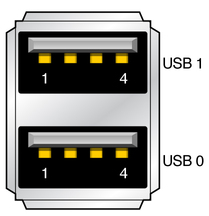| Skip Navigation Links | |
| Exit Print View | |

|
Netra SPARC T3-1BA Blade Server User’s Guide |
Documentation, Support, and Training
Evaluating Product Compatibility
Form-Factor Physical Characteristics
Warranty and Technical Support
System Requirements and Options
Installing Optional Components
Preparing to Install the Blade Server
Power and Thermal Distribution
Required Cooling and Blade Impedance Curve
Local Network IP Addresses and Host Names
Connect the External I/O Cables
Connect Cables to a System Console Running the Oracle Solaris OS
Connect Cables to a System Console Not Running Oracle Solaris OS
Insert and Latch the Blade Server
Software and Firmware Upgrades
Software and Firmware Upgrades
Firmware and Blade Server Management
Creating a Boot Disk Server and Adding Clients
Create a Boot Server for Diskless Clients
Compact Flash Formatting for the Oracle Solaris OS
Multiplex Configuration of Zones 2 and 3
Advanced Rear Transition Module Connectors (Zone 3)
Locate Base MAC Address on Blade Server
Configuring and Using Serial Over LAN
Shut Down OS and Deactivate the Blade Server
Power Off and Remove the Blade Server
The front panel has the following connectors, as shown in the following figure:
One 10/100/1000BASE-T Ethernet port (RJ-45), described in Ethernet Port
Two USB ports, described in USB Ports
One serial port (RJ-45) described in Serial Port
Figure 7 Ports on the Blade Server

Figure Legend
1 Serial port
2 Ethernet port
3 USB ports
The Ethernet connector is an RJ-45 connector. The controller autonegotiates to either 10 BASE-T, 100 BASE-T, or 1000 BASE-T.

See the following table for the Ethernet port pin assignments.
|
The following figure shows the connectors for the front panel USB ports.

The following table lists the pin assignments.
|
The following figure shows the connectors for the front panel serial port.
Figure 8 Serial Port Connector

The following table lists the pin assignments.
|